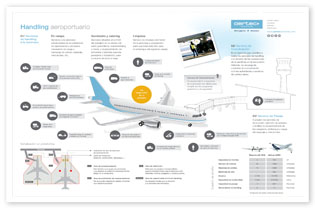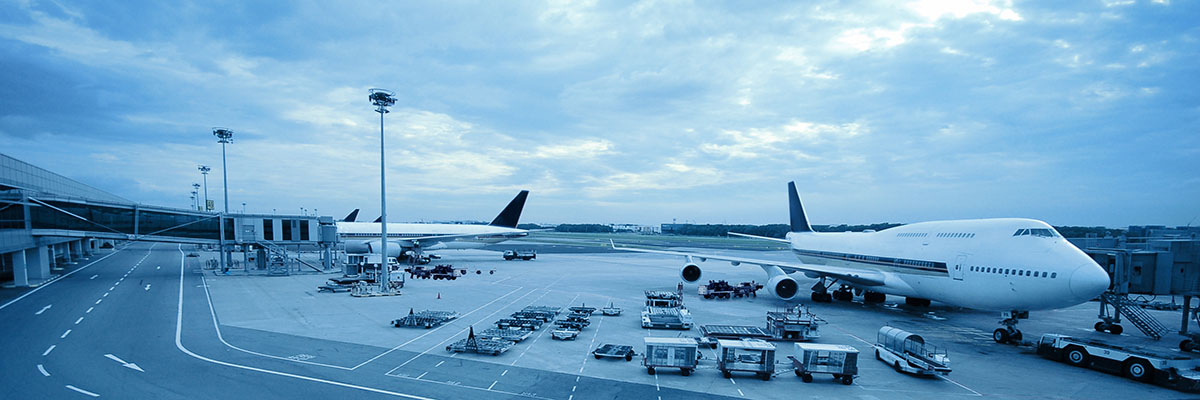When we are about to travel by plane we carry out a series of actions that are familiar: we first approach the check-in area, where a staff member awaits us to hand us over a boarding card, and drop off our luggage. After passing through security checks, we arrive at the boarding gate, where another employee makes sure our boarding card is in order. In addition, another employee takes us to the aircraft by bus if it is parked at a distant location. In the meantime, other workers have filled the aeroplane with fuel, other agents have provided the catering, the baggage has been loaded onto the hold…
Coordination and security are two crucial elements to dispatch an aircraft on time during a scheduled stopover.
All these people, who perhaps remain unseen by most passengers, belong to what is known as ground handling; in other words the services provided while the plane is on the ground.
A variety of such services are provided, including:
- Check-in
- Boarding
- Ramp handling
- Maintenance
- Cleaning
- Catering
- Fuelling
The image above shows some of the ground handling services provided to an aircraft during a stopover. Usually, there is a large number of personnel and equipment around the aircraft. Hence, coordination and security are two crucial elements to dispatch an aircraft on time during a scheduled stopover.
In addition to punctuality, service quality levels have to be met. In order to ensure them, Service Level Agreements (SLA) are laid down, through which a company or concessionaire provides a service to the airport under certain conditions in order to ensure a minimum level of quality and service provision.
Who then lays down the standards for these SLA? By means of its Airport Handling Manual (AHM), the International Air Transport Association (IATA) sets a series of standards for secure, efficient airport operations. IATA is also responsible for innovating and researching into new handling policies and security guidelines on a day-to-day basis.
Thanks to these standards, the company providing such services can size and adjust its own resources to its client’s needs. SLAs are monitored during the provision of these services to assess their quality and detect any possible deviations and the client can, in such case, demand corrective measures. Economic penalties may, in some cases, be triggered if there are significant deviations.
The provision of a good ground handling service contributes towards the image users and airlines have of an airport. All those involved in the process should therefore ensure suitable quality levels are maintained.
 Check out for more: Download our infographic about ground handling
Check out for more: Download our infographic about ground handling



